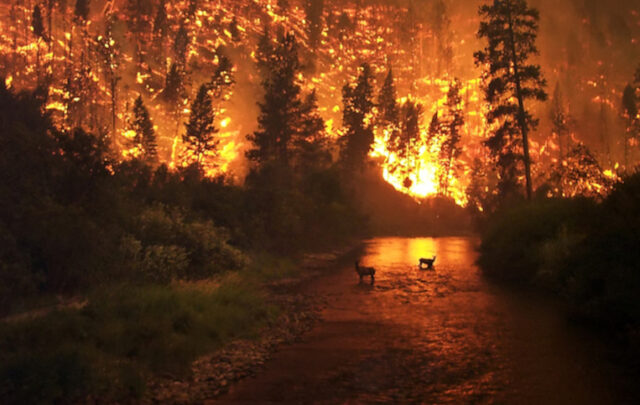Notes from a presentation by Tom Petrie to the Institute of International Education in Denver on June 18, 2007. Reported by Steve Andrews.
Energy will be one of the two or three defining issues we’ll face over the next decade. Since post-1999, we’ve essentially been in a crisis mode. That’s the result of an accumulation of factors.
The Key Strategic Drivers are:
- Geopolitical events and instability.
- These are not the root causes of our problems but will be the catalysts for change.
- The market’s appreciation of resource maturity.
- Unlike the world of the 1980s and 1990s, there is little excess capacity to turn to in times of trouble. There isn’t enough buffer. The loss of just 100,000 b/day of production is notable, and the loss of 400,000 to 500,000 b/day is a major market event.
- Back in 1967, the shutting of the Suez Canal and the slow-down in delivery of oil shipments from the Middle East was buffered by idle Texas production being brought on line. By the 1973 oil embargo, with no buffer, the same scale of problem caused a significant shortage of oil.
- Globally, we are approaching a peak in world oil production, if we haven’t already reached it.
- Roughly 75% of the world’s 85 mmb/day oil production is two or three decades old and is reaching a decline stage. Those mature fields are riding a decline curve and we can do little about it. As to the remaining 25%, much of it is 10-15 years old.
- Decline rates are inexorable. Between 2006 and 2010, if we stopped drilling today—an unrealistic but informative reference point—we would lose the following amount of production at these three different decline rates:
— If 2.5% decline rate, then we lose 8.2 mmb/day;
— If 5% decline rate, then we lose 15.7 mmb/day;
— If 8% decline rate, then we lose 24.0 mmb/day. This is the rate that Schlumberger estimates in their most recent quarterly newsletter, and they are the most informed private-sector player in this arena. - The finding costs to add natural gas reserves each year has increased 127% between 2000 ($1.13) and 2006 ($2.56), according to numbers from independent producers. We think their numbers understate what’s really happening, and that the figure is closer to $3.50 and up today.
- The finding costs for oil have increased from $10-$12/barrel in 2000 to $20 to $25/barrel today.
- The realignment of economic and security interests is unprecedented.
- Russia and China have become linked today via economic and energy ties, and those links are becoming stronger than ever.
- China and Iran are becoming more closely linked; 11% of China’s oil comes from Iran.
- Rising resource nationalism
- Government-owned oil companies control between 90% and 95% (we calculate 93%) of the world’s proven oil reserves. The 13 largest oil companies are national oil companies. This is triggering new behaviors. Venezuela is nationalizing oil-producing assets, and the majors are not optimistic about being paid anything close to fair market value for those assets. Bolivia, Ecuador and Peru are following Venezuela’s lead.
- In West Africa, contracts are being honored, but China and India bring hospitals and roads and part of their equation, which gives them an advantage in negotiations.
- Russia is making the most interesting moves. There’s a limited market for their stacking doll-sets, but there’s an unlimited market for their energy resources. They are continuing to aggressively tighten the screws: first by renationalizing Yukos, then by holding a gun to Shell’s head over some environmental issues at Sahkalin Island, then renegotiating with BP. They will continue to be very difficult to deal with.
- The bottom line here: this has caused a dramatic search in the world today for secure energy assets, such as Canada’s oil sands and the deepwater Gulf of Mexico.
- Much heightened environmental sensitivities
- Al Gore’s movie has struck a chord, regardless of what you believe about the climate change issue.
- Capital and merger-and-acquisition markets
- There is no shortage of capital chasing energy resources.
Likely trends going forward:
- Proscribed opportunities and limited project access in the international arena are increasingly motivating IOCs to refocus on the North American sector.
- Rising finding and development costs are re-emphasizing the case for corporate consolidation for all industry players (esp. larger capitalization independents).
- Abundant private equity is more actively considering expanding energy sector investments.
- Midstream gas infrastructure opportunities are enjoying rising appeal by the traditional upstream enterprises.
- Significantly depleted upstream prospect inventories are increasingly the interest of many large cap enterprises in resource play exposures both in the asset and corporate merger-and-acquisition markets.
- In sum, energy issues are likely to remain at center stage for the balance of this decade and well into the next.
Responses to Q&A
— Policy recommendations: The first rule is, “do no harm;” if they succeed, that would be a departure from historical policies; for example, during the early 1980s, policy made a bad situation worse. Second, on the positive side, we should shift to policies that have the least environmental impact via energy consumption, such as hybrid-electric vehicles. If we pursued this on a world-wide scale, we could cut up to 6 million barrels/day within six years; that’s more than the combined output of Kuwait and Iran. Third, we need a Manhattan Project to bring north-slope gas to the lower 48 ASAP. Also, we’ll need to obtain energy from new nuclear, clean coal, and renewable energy sources.
— Iraq production: the case for Iraq to produce 4 or 5 or even 6 million barrels a day is technically sound but is not imminent.
— The Saudi-US “special relationship:” That relationship has been significantly altered and
impaired by 9/11. Our relationship with them is now one of many. China will become of coequal importance to the US relationship.
— Peak oil timing: The practical limits of output—we’re very close; if we’re not at a peak, we’re very close. We could get to 90 or 95 or 100 million barrels on paper (from 85 million today), but in the real world I doubt we’ll get to 90 mmb/day. We’ll need conservation and high prices to allocate scarce supply. Overcoming depletion is like trying to climb up the down escalator with the escalator mechanic using his screwdriver to ratchet up the speed.
— EIA’s optimistic 10-year forecast for natural gas, which he had shown on a slide: When asked about it, he said, “dream on.” He said the trouble is finding a credible third-party forecast that’s more realistic.
Tom Petrie co-founded Petrie-Parkman & Co. in Denver in 1989. The energy investment bank’s track record included over $140 billion in merger and acquisition activity plus a stint as advisor to Saudi Arabia on natural gas development. Global Finance named it the best investment back in the oil and gas sector in both 2005 and 2006. Merrill Lynch acquired the firm in October 2006. Petrie has been invited to speak at the Houston ASPO-USA conference October 17-20.
(Note: Commentaries do not necessarily represent ASPO-USA’s positions; they are personal statements and observations by informed commentators.)





